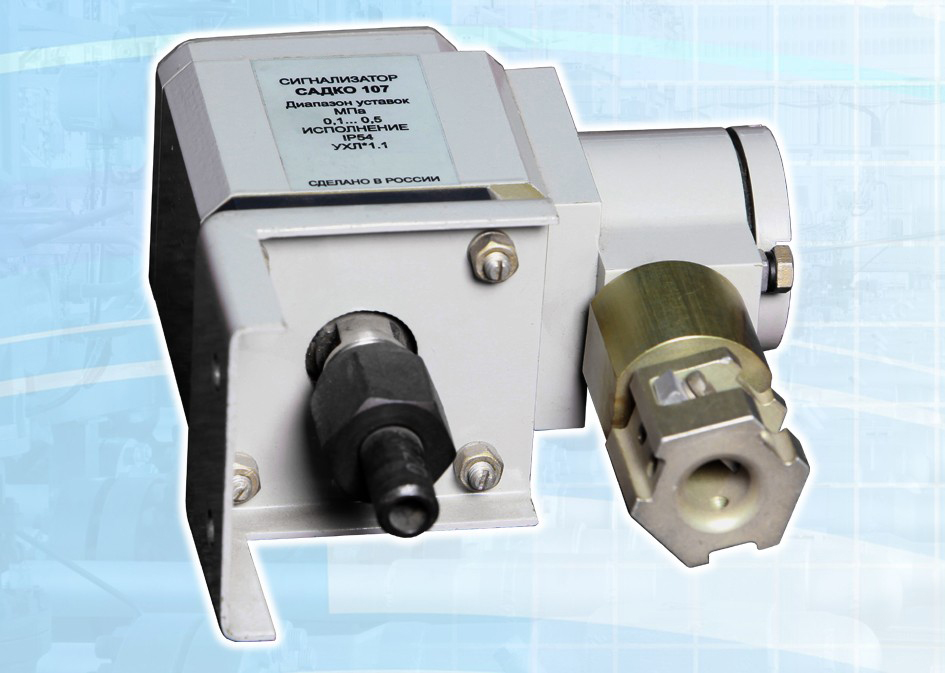
Purpose
Explosion-proof pressure relays are meant for electrical switching when pressure reaches the set values (activation setpoint) and switching back the contact group when pressure changes by the differential value.
Design features
- relays have one normally open and one normally closed contact. Contacts provide switching of active and inductive loads with (1 ... 100) mA current at (20 ... 30) V voltage. The number of activations is not more than 105 under these loads;
- mass-produced, have "1ExdIIBT4" marking of explosion protection, conform to GOST 12.2.020-76, GOST 22782.0-81, GOST 22782.6-81;
- According to the degree of protection against dust and water - according to GOST 14254-80.
Specifications
| Range of activation setpoints | MPa | (0-0,0025...0-0,01)...(3,0-6,0) |
| Operating temperature range | °C | -50...+70 |
| Life time | years | 15 |
| Warranty lifetime | ||
| Weight (max) |
Relays have two versions and modifications, different in the range of activation setpoints (see. Table below).
Version 1: : relay is actuated (closure of contact 1-2) when the pressure increases up to the opening pressure [Pact]. Relay is armed (closure of contacts 1-3) when the pressure goes down to value Rarm (Ract - D), where D is differential. Differential is the absolute difference between the actuation pressure [Pact] and the arming pressure [Parm]. The initial state for all relay versions is the state, when the pressure in the working volume of relays is equal to the atmospheric one.
Version 2: relay is actuated (closure of contact 1-3) when the pressure goes down to the actuation pressure [Pact] after preceding pressure increase up to the arming pressure [Parm] (closure of contact 1-2) greater than [Pact] by the value of differential D. Differential is the difference between the arming pressure [Parm] and the actuation pressure [Pact].
Electrical diagram


